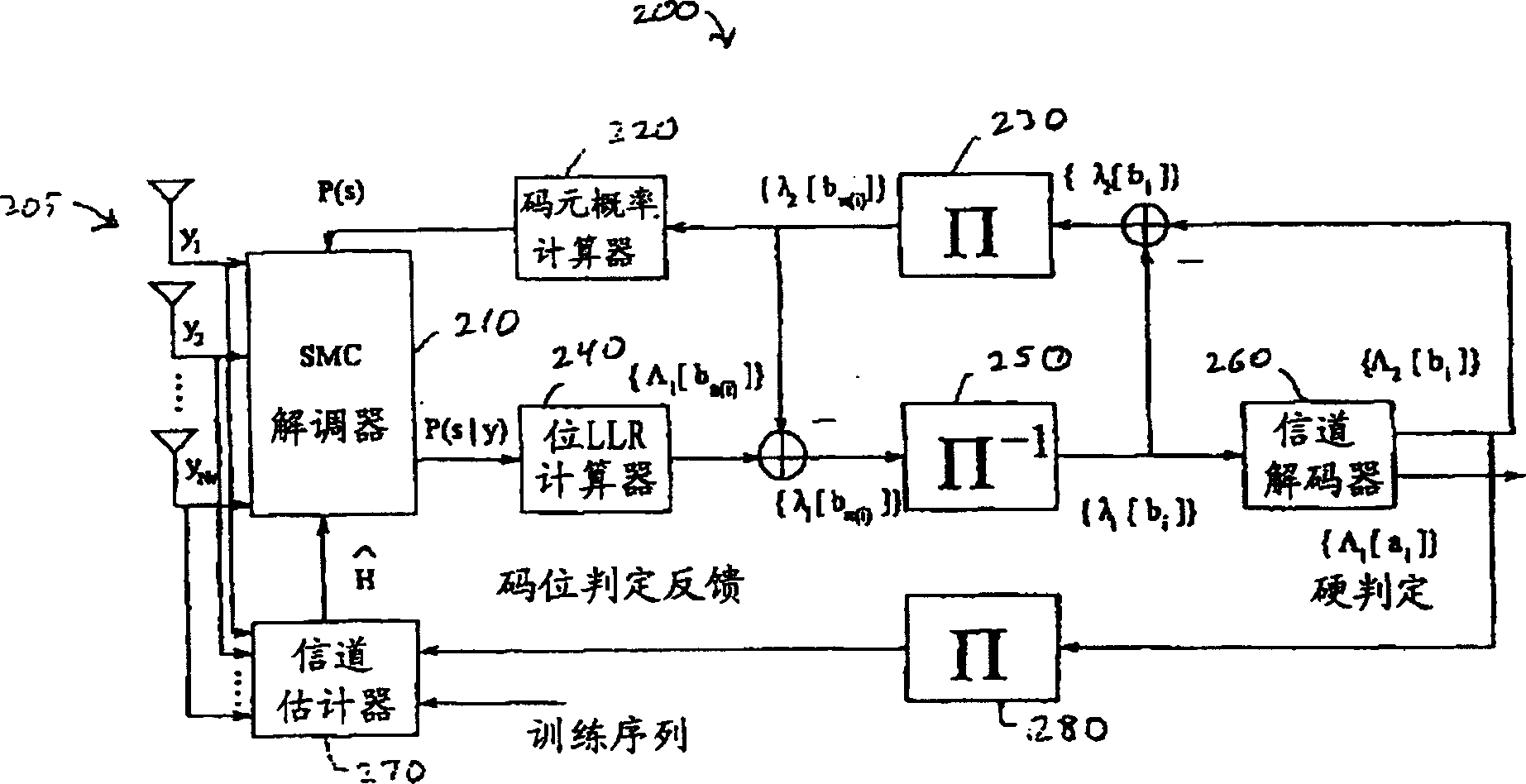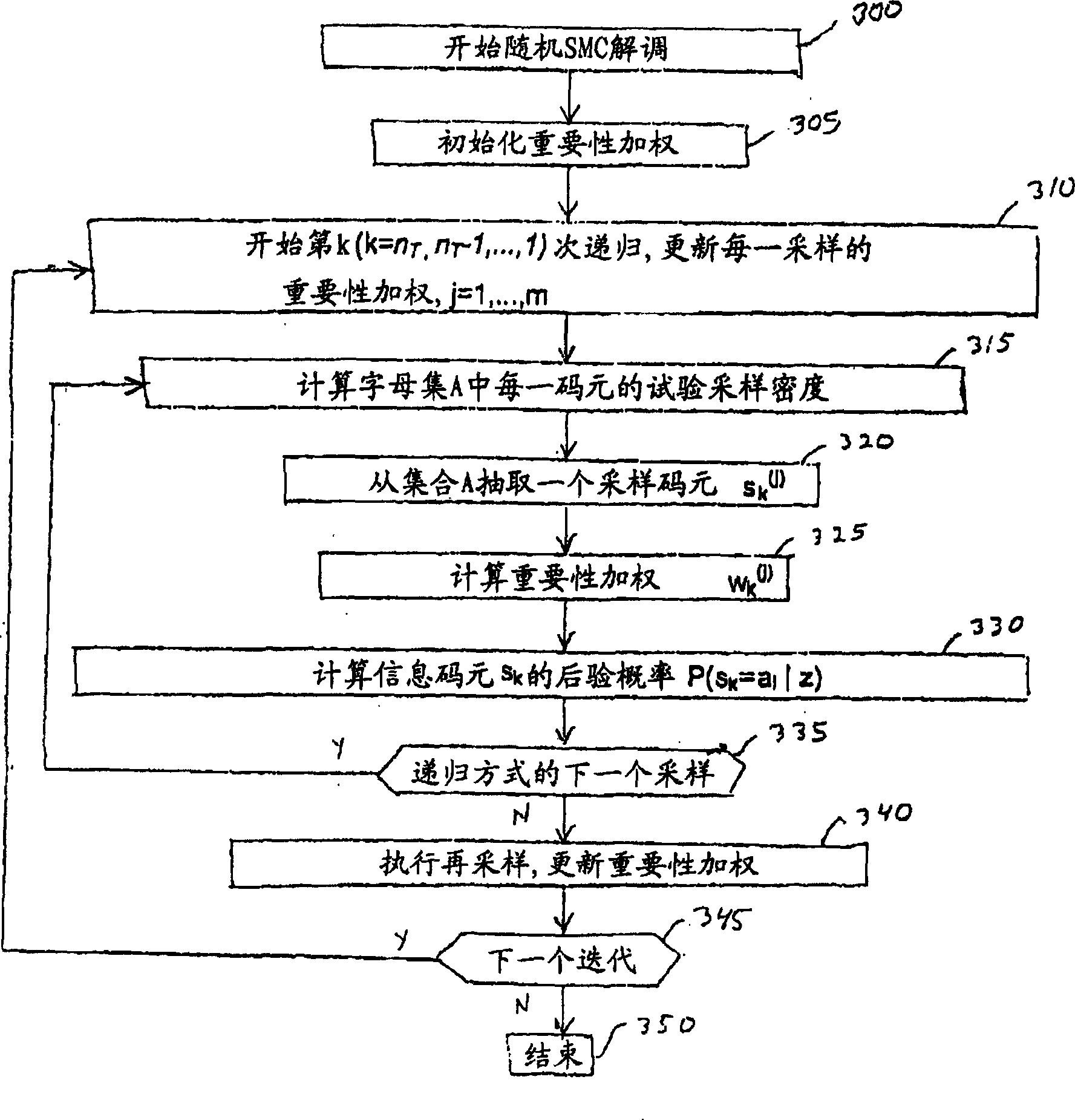Near-optimal multi-input multi-ouput channel detection via sequential monte carlo
A channel and signal receiving technology, applied in the direction of preventing/detecting errors through diversity reception, error correction/detection by combining multiple code structures, multiplexing communication, etc., can solve high-complexity problems and achieve low-complexity degree of effect
- Summary
- Abstract
- Description
- Claims
- Application Information
AI Technical Summary
Problems solved by technology
Method used
Image
Examples
Embodiment Construction
[0022] The description is organized as follows. Section 2 describes the system under study. Background material on the SMC methodology is provided in Section 3. In Section 4, we exploit stochastic SMC and deterministic SMC to derive a new class of soft MIMO demodulation algorithms based on a simple nulling and offsetting BLAST detection scheme. Computer simulation results are presented in Section 5 and conclusions are drawn in Section 6.
[0023] 2. System description
[0024] In this section, we consider a general coded MIMO system using a turbo receiver. The structures of the transmitter and receiver are respectively in figure 1 with figure 2 shown in . exist figure 2 where ∏ represents the interleaver, ∏ -1 Indicates the deinterleaver.
[0025] 2.1 Transmitter structure
[0026] At the transmitter 100, the information bit block {a i} is encoded into code bits {b in the channel encoder 110 i}. The code bits are then randomly interleaved at the interleaver 120,...
PUM
 Login to View More
Login to View More Abstract
Description
Claims
Application Information
 Login to View More
Login to View More - R&D
- Intellectual Property
- Life Sciences
- Materials
- Tech Scout
- Unparalleled Data Quality
- Higher Quality Content
- 60% Fewer Hallucinations
Browse by: Latest US Patents, China's latest patents, Technical Efficacy Thesaurus, Application Domain, Technology Topic, Popular Technical Reports.
© 2025 PatSnap. All rights reserved.Legal|Privacy policy|Modern Slavery Act Transparency Statement|Sitemap|About US| Contact US: help@patsnap.com



